C1 Advanced Speaking – A quick overview
The speaking paper in C1 Advanced is only one of five parts and counts 20% towards your overall score. The other parts of the exam are:
- Reading
- Use of English
- Writing
- Listening
In the speaking test, you have to demonstrate your ability to communicate with the examiner and another candidate (or two other candidates if you happen to do the test in a group of three) as well as to talk about different topics on your own over shorter and longer periods of time. These various abilities are tested in four parts (timings are for pairs/groups of candidates):
- Part 1 (2/3 minutes): The examiner asks each candidate a few questions about themselves, for example about their motivation to learn English, their habits, friends and family, hobbies, etc. This is like a warm up.
- Part 2 (4/6 minutes): Each candidate is given three photographs and talks about two of them for about a minute. In addition, you have to answer a question briefly about (one of) the other candidate’s pictures.
- Part 3 (4/6 minutes): In this part, the candidates need to discuss a question and make a decision based on written prompts the examiner provides.
- Part 4 (5/8 minutes): A discussion of different questions based on the topic in Part 3.
During the exam, there are two examiners present. The one asking all the questions is called the interlocutor while the second one taking notes and actually marking you according to specific criteria, which we are going to look at in a moment, is called the assessor.
The marking criteria in C1 Advanced Speaking
When it comes to the speaking test in C1 Advanced, the assessor and interlocutor mark your production of language across six different criteria:
- Grammatical Resource
- Lexical Resource
- Discourse Management
- Pronunciation
- Interactive Communication
- Global Achievement
The interlocutor only awards you marks for Global Achievement while the assessor looks at all the other criteria.
Without going into too much detail here in this article, you should be aware that firstly, there are very detailed descriptors of each criteria and of what you should be able to do in order to get higher marks and secondly, the different criteria are not all weighted the same as Global Achievement is worth more than the others. I recommend checking out the two links below which explain those two topics a little bit better.
- Detailed explanations of the different marking criteria in C1 Advanced
- How the different marking criteria are weighted in the speaking exam
The different parts of C1 Advanced Speaking
After looking at the basics of the speaking exam, we are now going to take a deep dive into each of the four different parts. Once you’ve read this section, you will know what is important in each part in terms of language, structure and marking criteria, so let’s get started.
Speaking Part 1
As mentioned in the overview at the beginning of this article, Part 1 is like a warm up for you and the other candidate(s) so that you get into the flow of speaking in English and to settle into this quite stressful exam situation. That’s why the topics the examiner asks you are pretty straight forward and nothing you have to think about too much. The interlocutor usually gets started by asking about where you live to then move on to ask you a one or two other questions about things like hobbies, family and friends, past experiences, future plans, etc.
Remember that this part is quite short with just two minutes for pairs or three minutes for groups and you are not supposed to react to anything the other candidate(s) say. It is just an interaction between the interlocutor and the individual candidates.
As a rule of thumb, I always tell my students to try and give answers that are around 20-25 seconds long depending on what the interlocutor asks you about. This way, you always answer the questions and give some extra information. You don’t have to expand a lot on each topic, but at this level, you should definitely be able to support your answers with some examples or more detail.
Below you can see a real example of a part 1 by two C1 Advanced candidates.
Both candidates do quite well in this part to get the exam started. They answer the questions and, as appropriate, add some more information or explain a little bit more what they want to express. As you can see, it is all very natural and light to give the candidates confidence and put them at ease for the coming parts.
Speaking Part 2
In Speaking Part 2, the interlocutor gives you three photographs and gives you some context. You then have to choose two of the pictures, compare them and answer two questions about them in just about one minute. When you partner finishes their one-minute turn, you also have to answer a question briefly about their photos.
If you do the exam with just one other candidate, the whole part takes just about four minutes, which includes all the instructions as well as the individual long turns and additional questions about your partner’s pictures. In case of you doing the test in a group of three, two extra minutes are added to the timing so that Part 2 comes to six minutes.
When doing this part, there are a couple of important things you should keep in mind. Firstly, you want to make sure that you compare the photos instead of just describing them. Sentences like, “In the first picture, I can see …” mostly lead to a plain description of what’s in the photo and won’t necessarily get you to where you want to go. Secondly, you have to answer the questions and because you have just one minute this can be a struggle.
The good thing is that you can solve the two problems with the same strategies.
- Immediately focus on the questions and don’t even try to describe the photos.
- Compare the photos by using the right language (comparative adjectives/adverbs, contrasting language, focus on similarities/differences)
On top of that, you need to show that you can speculate about the pictures. After all, you don’t know the people in the photos so you can only guess how they feel or what exactly they are doing. Again, use appropriate language (modal verbs of deduction, adjectives/adverbs to speculate [perhaps, maybe, likely, unlikely, probably, etc.]).
You might think that this is too much information to process so let’s have a look at an example task and a possible response. In the task below, you can see people sleeping in different situations. How would you compare two of the photos and answer the questions in one minute?
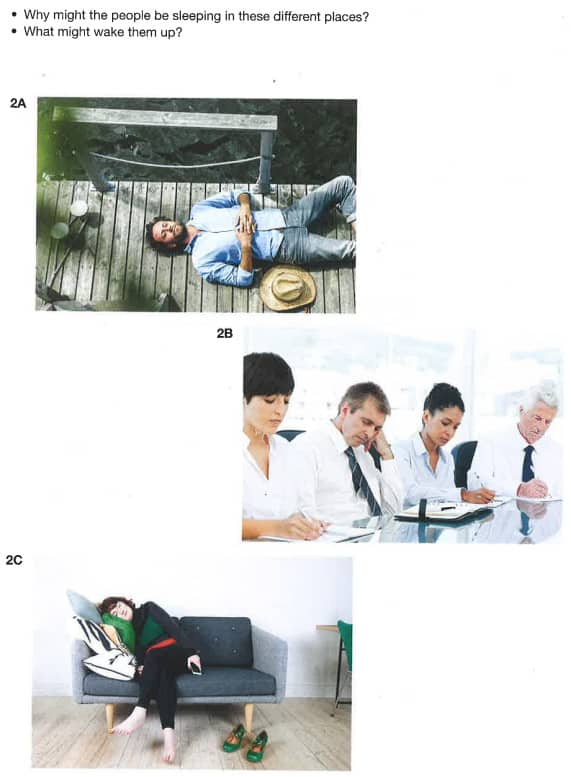
I’m going to talk about pictures 2A and 2B. In 2A, the man might be taking a nap or just take a rest after going for a walk as he’s wearing casual clothes and a sunhat. He looks very relaxed so I don’t think he’s recovering from a hard day of work or any other strenuous task. In contrast, the man in 2B seems to be in a meeting at his office job because he and the other people, possibly his colleagues, are dressed more formally than the man in 2A. As a consequence, the person in 2B could be exhausted or simply bored by a long meeting.
I would say that in the first photo, anything or anyone approaching could wake the man up, for example a boat, a dog or bird or any other kind of natural or man-made noise as I don’t think he is sleeping all too deeply. Likewise, the man in 2B could be woken fairly easily by someone deliberately trying to get his attention or one of his colleagues who wants to save him from an embarrassing situation when his boss realises that he’s snoozing.
You can try and read my ideas out loud and you should get to about a minute if you say it at natural speed. So, we see that we can’t put all that much information in a task like this. Instead, we need to focus on the two questions and the right language from the beginning. I’ve highlighted good speculative and comparative language as well as appropriate vocabulary for you so you can get inspired for your own try.
For an example that is not just written down, let’s see what Maude and Raphael from the video do in Part 2.
Raphael answers the questions and includes some speculative language but doesn’t compare the photos that much and his ideas could be organised better. Maude also does a good job answering the questions and talking about the photos, but she could also use more specific language to compare and contrast the situations. In the brief extra questions about their partners’ pictures, both candidates do a great job answering the question clearly and supporting their views with reasons and examples. Two very solid attempts and just like that, we move on to the next part.
Speaking Part 3
Speaking Part 3 is where, finally, you get to talk to the other candidate(s). The interlocutor presents you with five ideas and a question which you need to answer together.
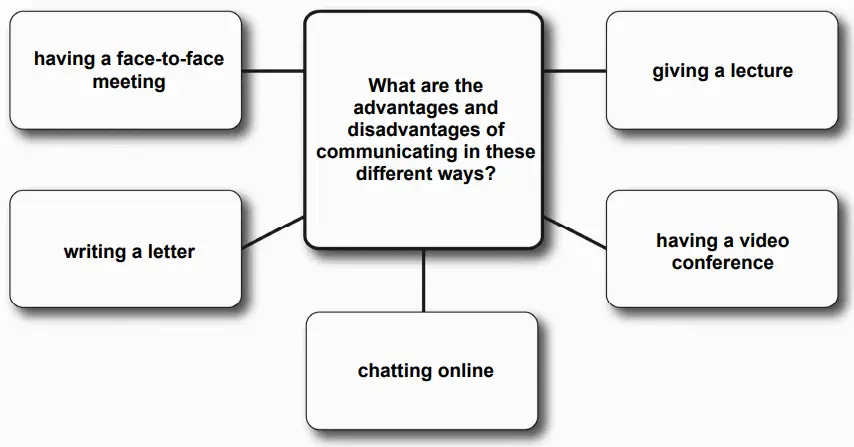
In the first phase, you only discuss the question in the context of as many of the ideas as you can in about two minutes for pairs and three minutes for groups of three. Here, you have to demonstrate your ability to express and justify your opinion as well as evaluating and speculating about the different ideas.
In the second phase of this part, the interlocutor asks another question where you have to try and reach a decision. For this task, pairs have one minute while groups of three get two minutes. Here, it is time to compare the different ideas and pick out one or two options based on the interlocutor’s question. You need to show that you can negotiate and collaborate well with your partner(s), but note that you won’t lose any marks if you don’t reach a final decision. After all, you don’t have that much time so as long as you work towards an outcome, the examiners are going to be happy.
Once again, Maude and Raphael do a decent job here. They give their opinions and justify them and they also interact in a pretty natural way to show their agreement and disagreement. In the second phase, they get to to a decision quite quickly and need to scramble to fill the full minute with conversation. Pro tip: Always disagree with your partner as this gives you more opportunity to speak until the interlocutor stops you. If you agree too soon, like Maude and Raphael, there’s nothing left to say after just a few seconds.
Speaking Part 4
In the last part of the C1 Advanced speaking test, the interlocutor asks the candidates a few more questions related to the topic in part 3. Part 4 takes roughly five minutes to finish the test. It is important to show once again that you can express and justify your opinions and also to react appropriately to the other candidate(s) views. You have to listen very closely to what they say in order to be able to express your (dis-)agreement and to deepen the conversation.
The interlocutor has different options here. They might ask one candidate first and then ask the other one about what they think or they might simply ask the question and encourage the candidates to a more open discussion. Either way, you need to be ready.
One last time, let’s see what Maude and Raphael do in this part.
Both candidates make relevant contributions to the discussion and they express their ideas clearly and in an organised way. They also agree and disagree appropriately so that they bring the test to a successful end.
You can find their marks and the examiners’ comments here.
Summary
I hope this article gives you a good idea of how the C1 Advanced speaking test works. We’ve looked at the basic ideas as well as some examples that have hopefully helped you with some insights about what to do and what not to do.
Parts 2 and 3 definitely benefit from a lot of practice so I encourage you to find a partner or class where you can work on your speaking and exam skills and I wish you all the best for your preparation.
Lots of love,
Teacher Phill 🙂

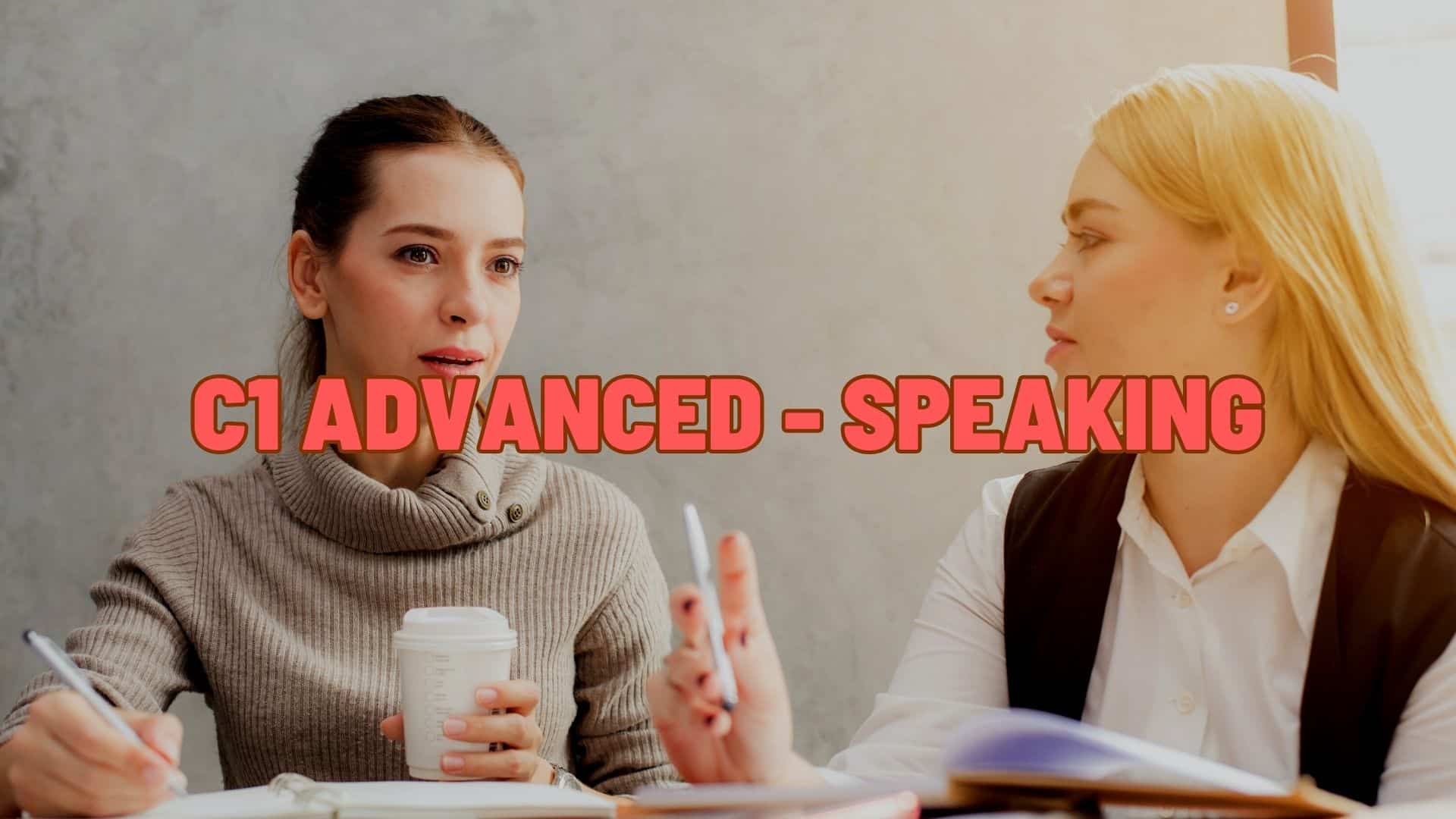
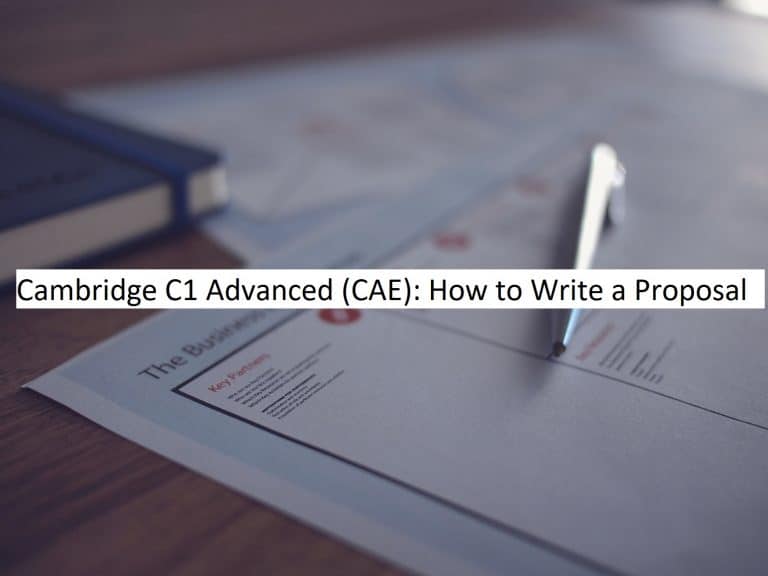
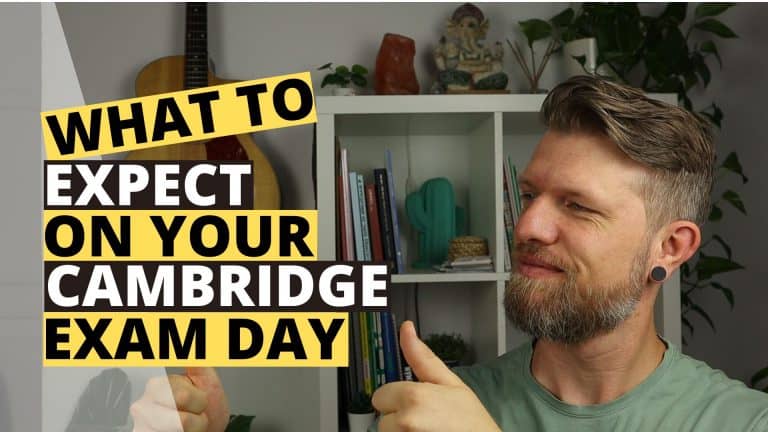
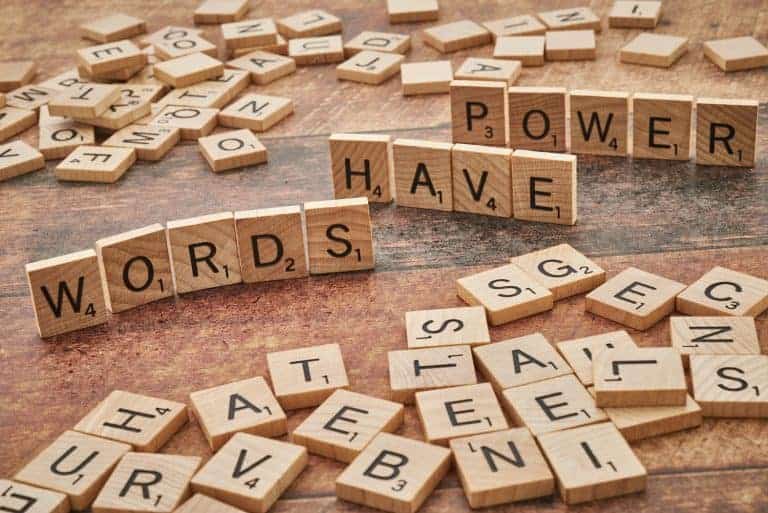
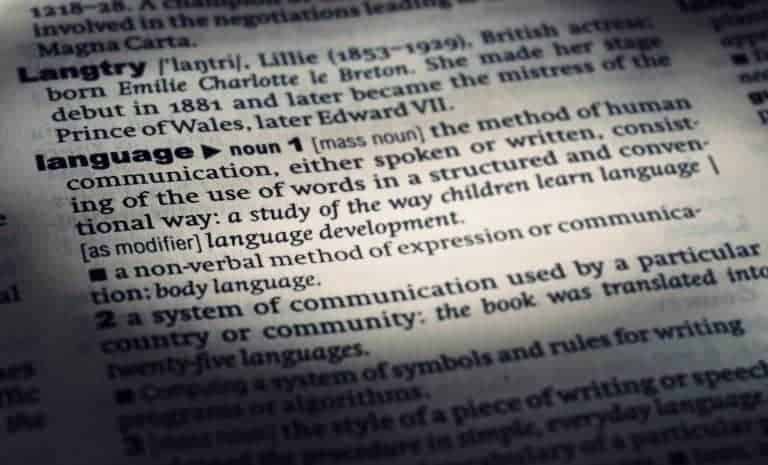
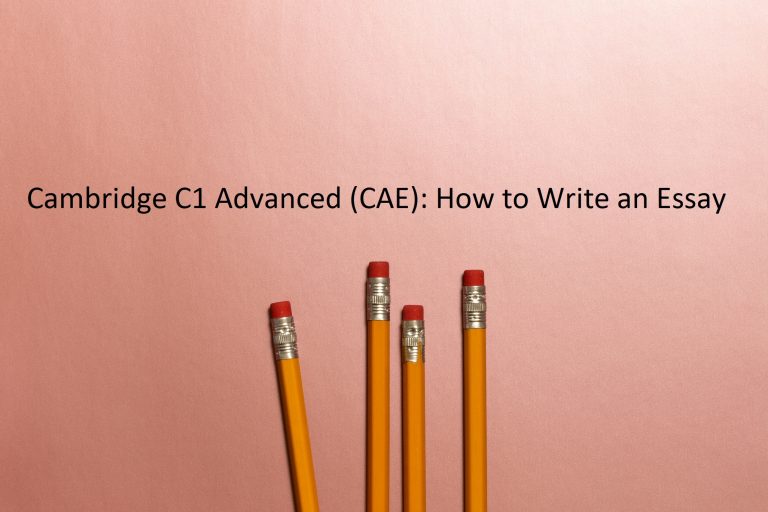
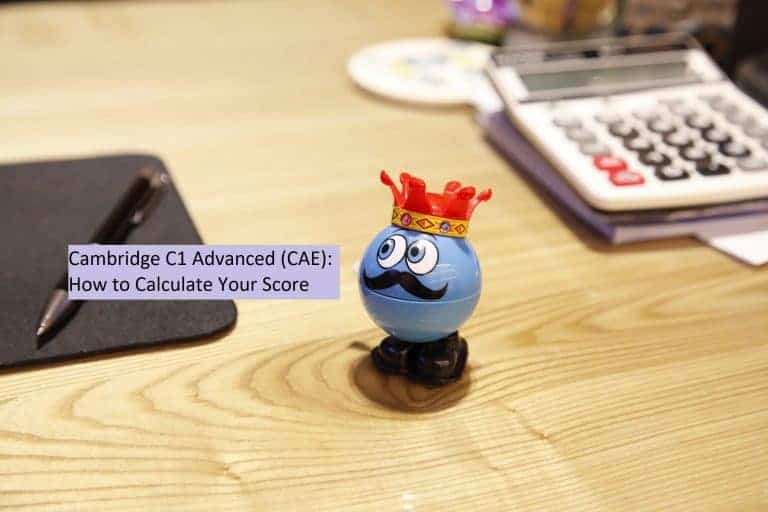
thank you! i remember our teacher showing this article in my cae prep class and i found it again now that im teaching a cae prep class 🙂
a very useful source of information, thank you